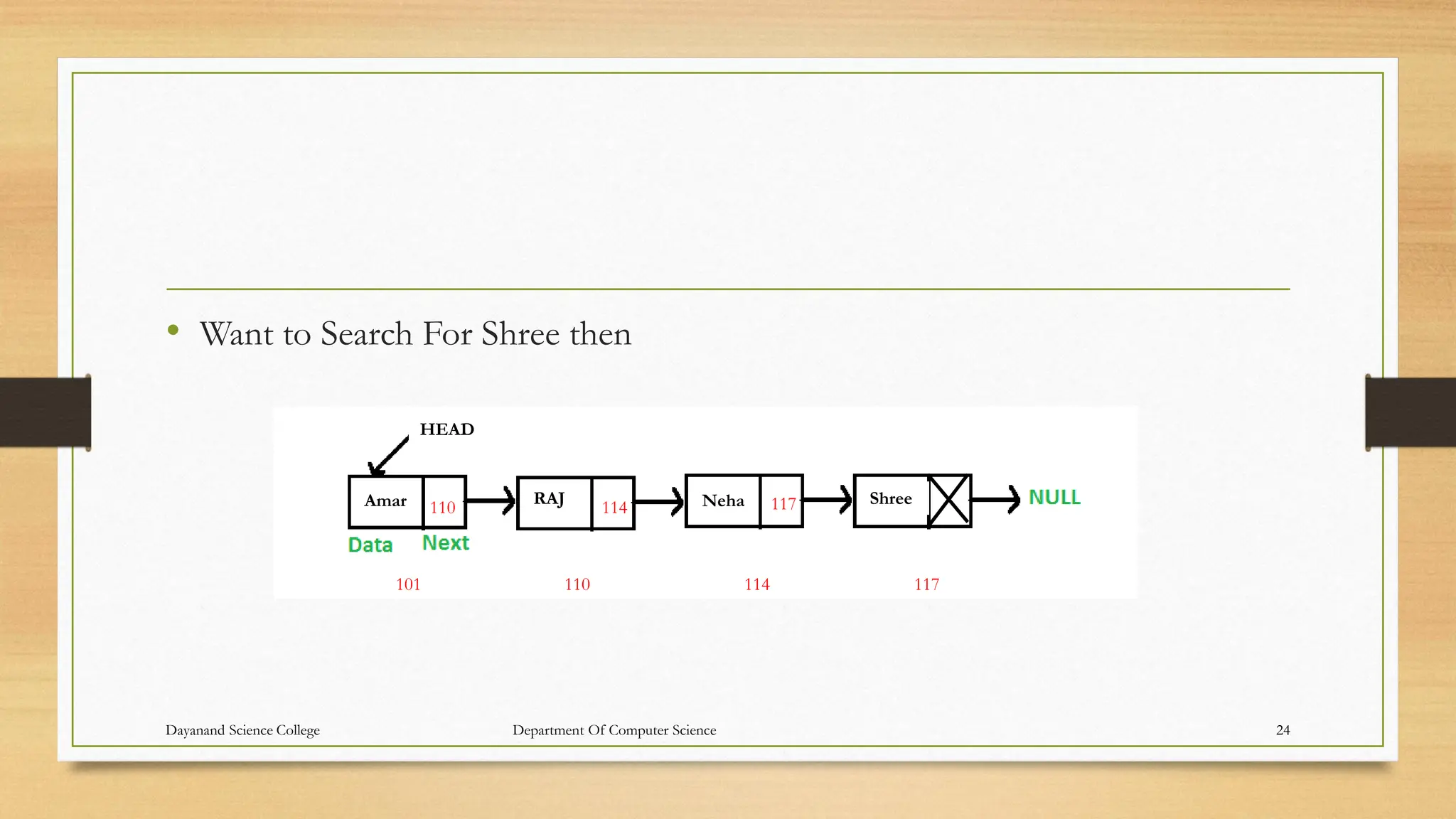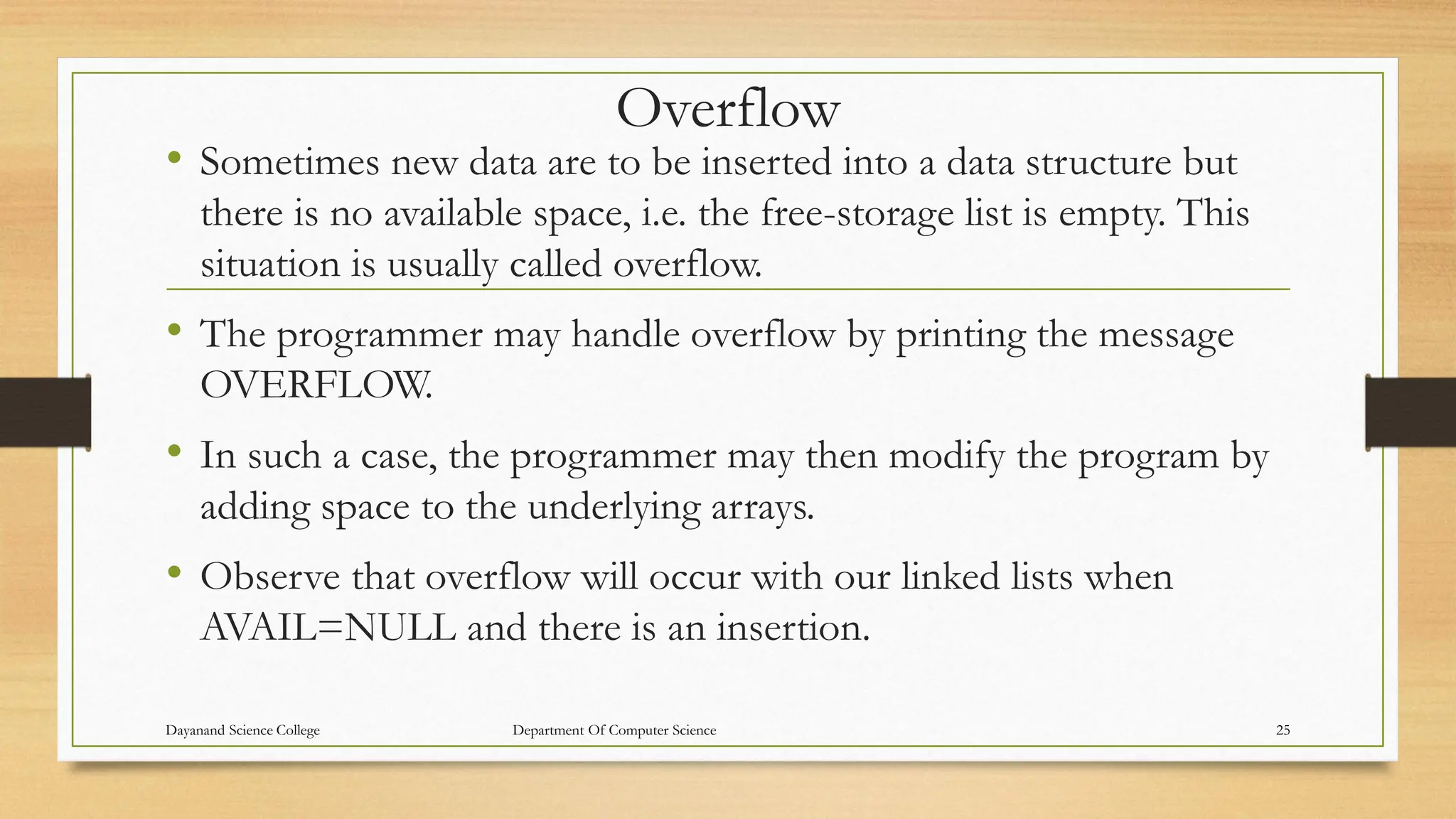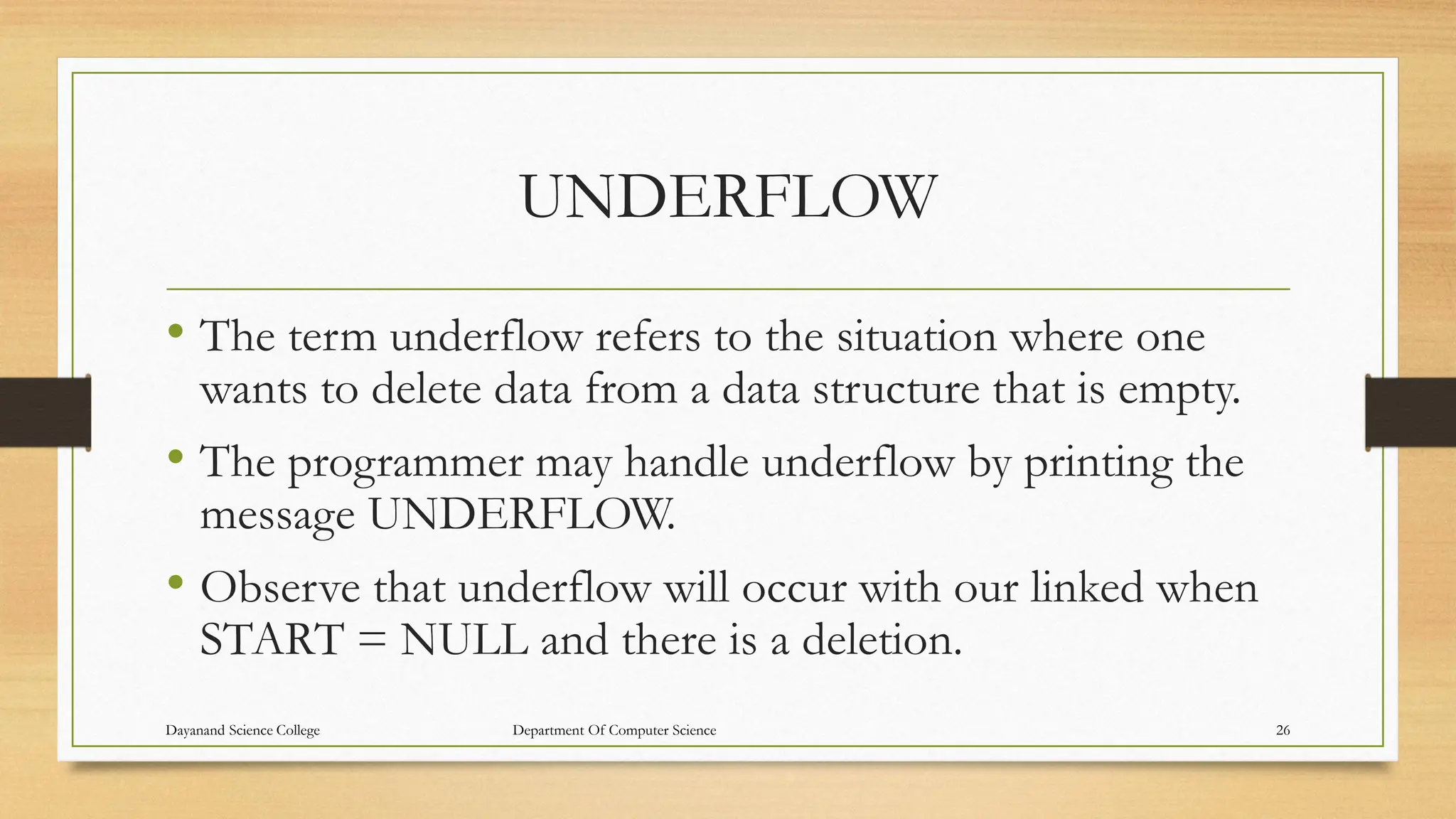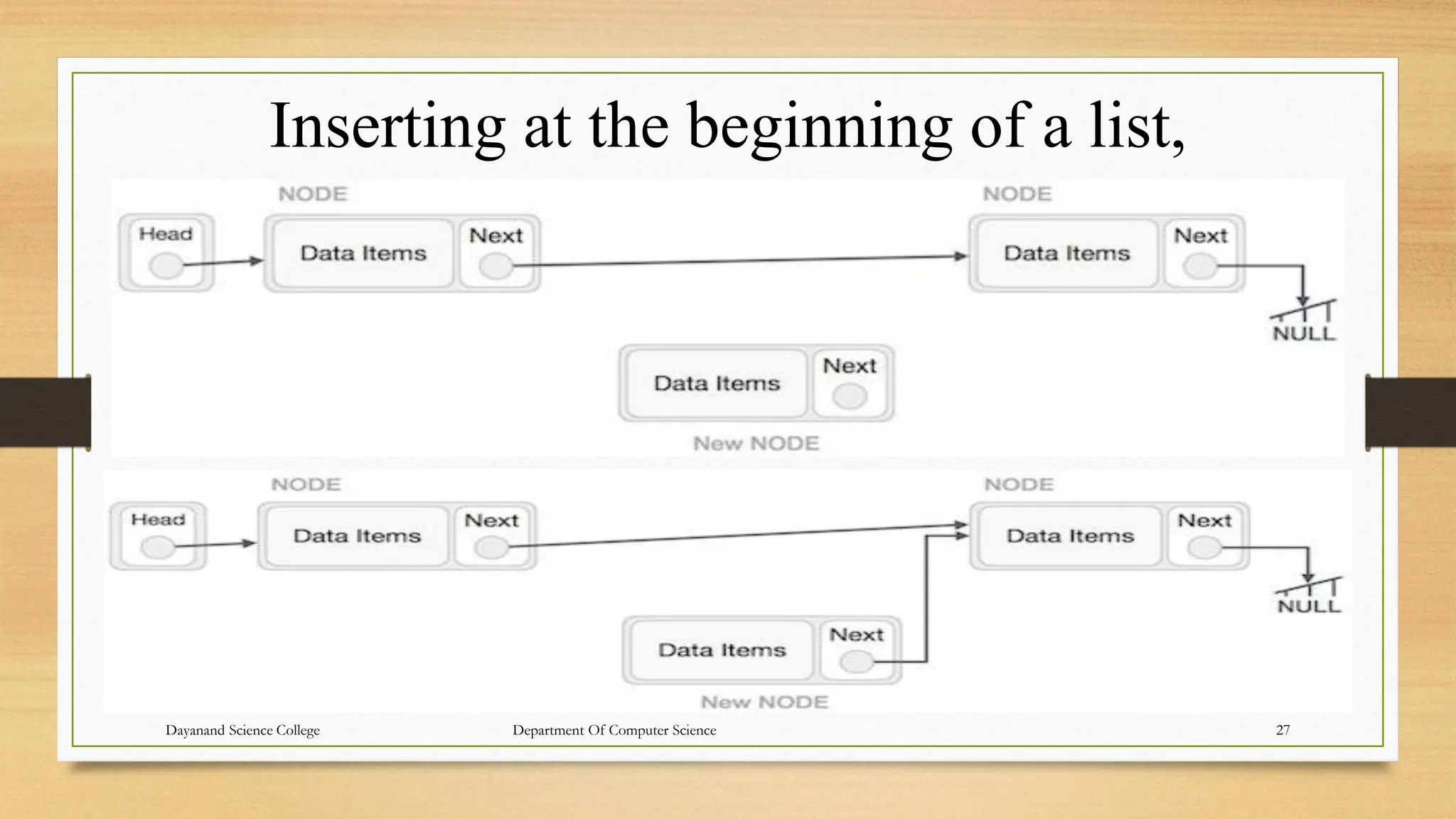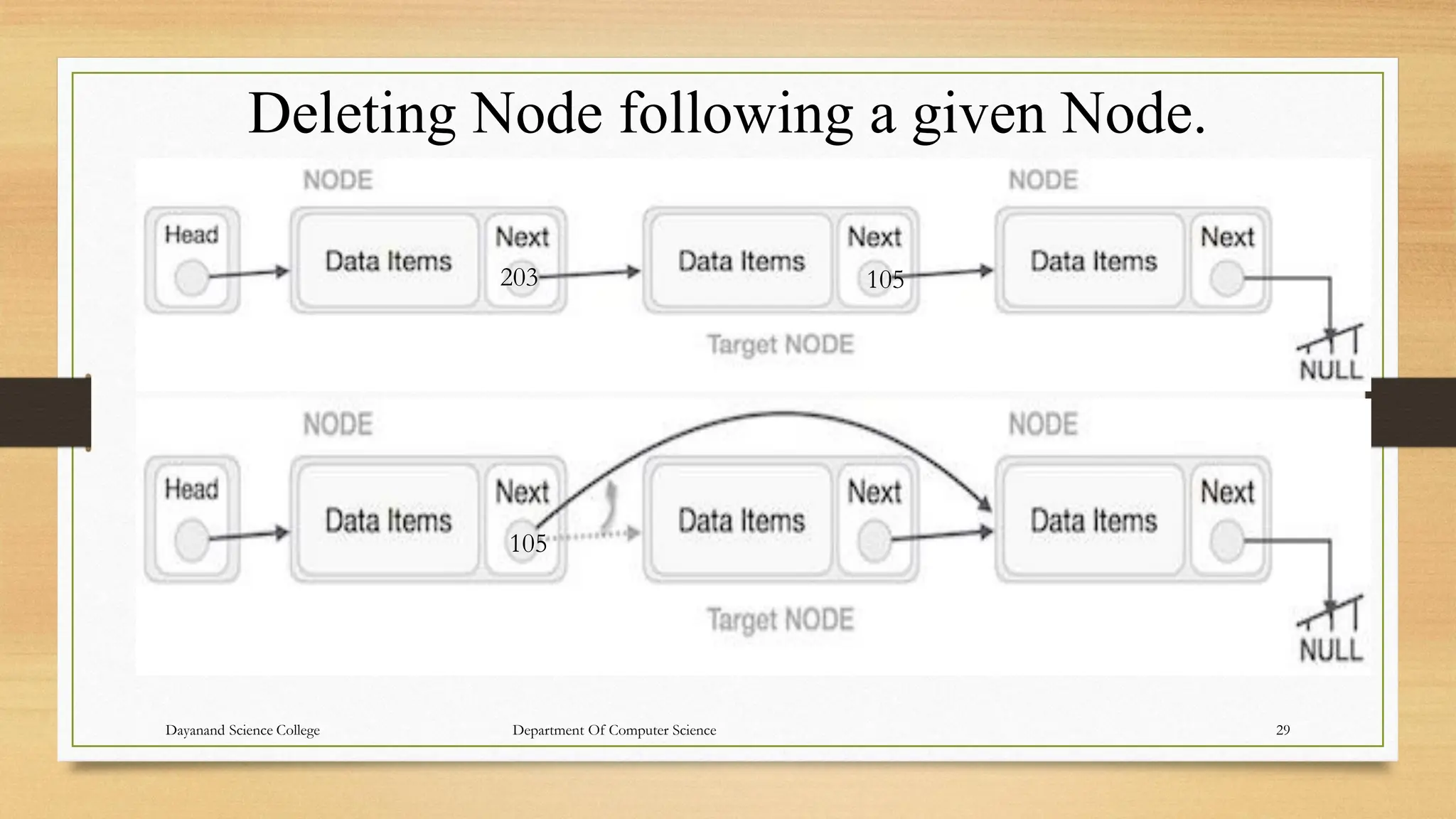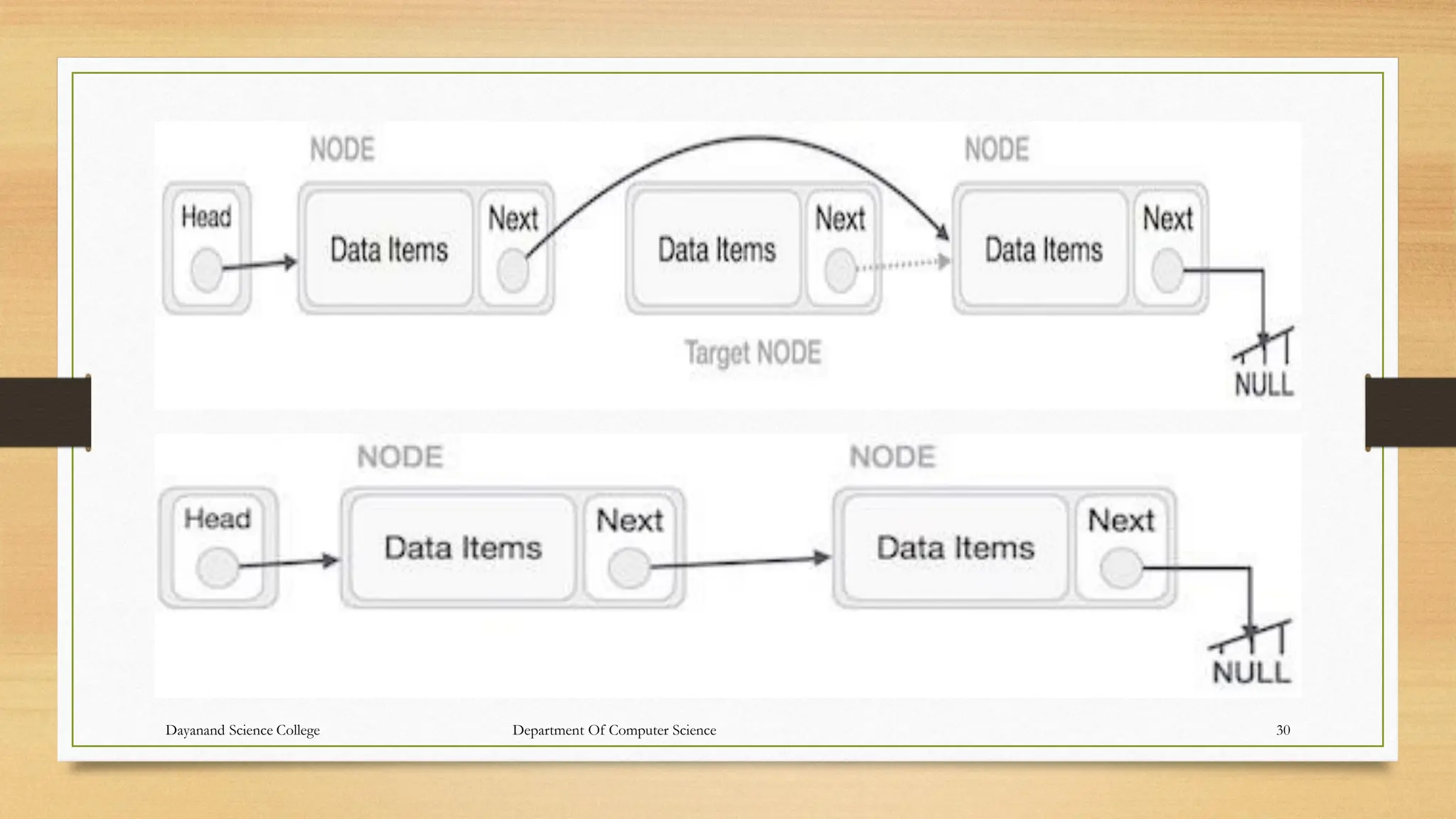1. The document discusses linked lists, including their representation in memory using nodes containing data and pointer fields, common operations like traversal, searching, and examples of single/double/circular linked lists.
2. Linked lists allow for efficient insertion/deletion by avoiding the need to shift elements like in arrays, but can only be traversed sequentially through each node.
3. The key aspects of linked lists like representation, traversing algorithms, searching unsorted lists, handling overflow and underflow are explained through examples.

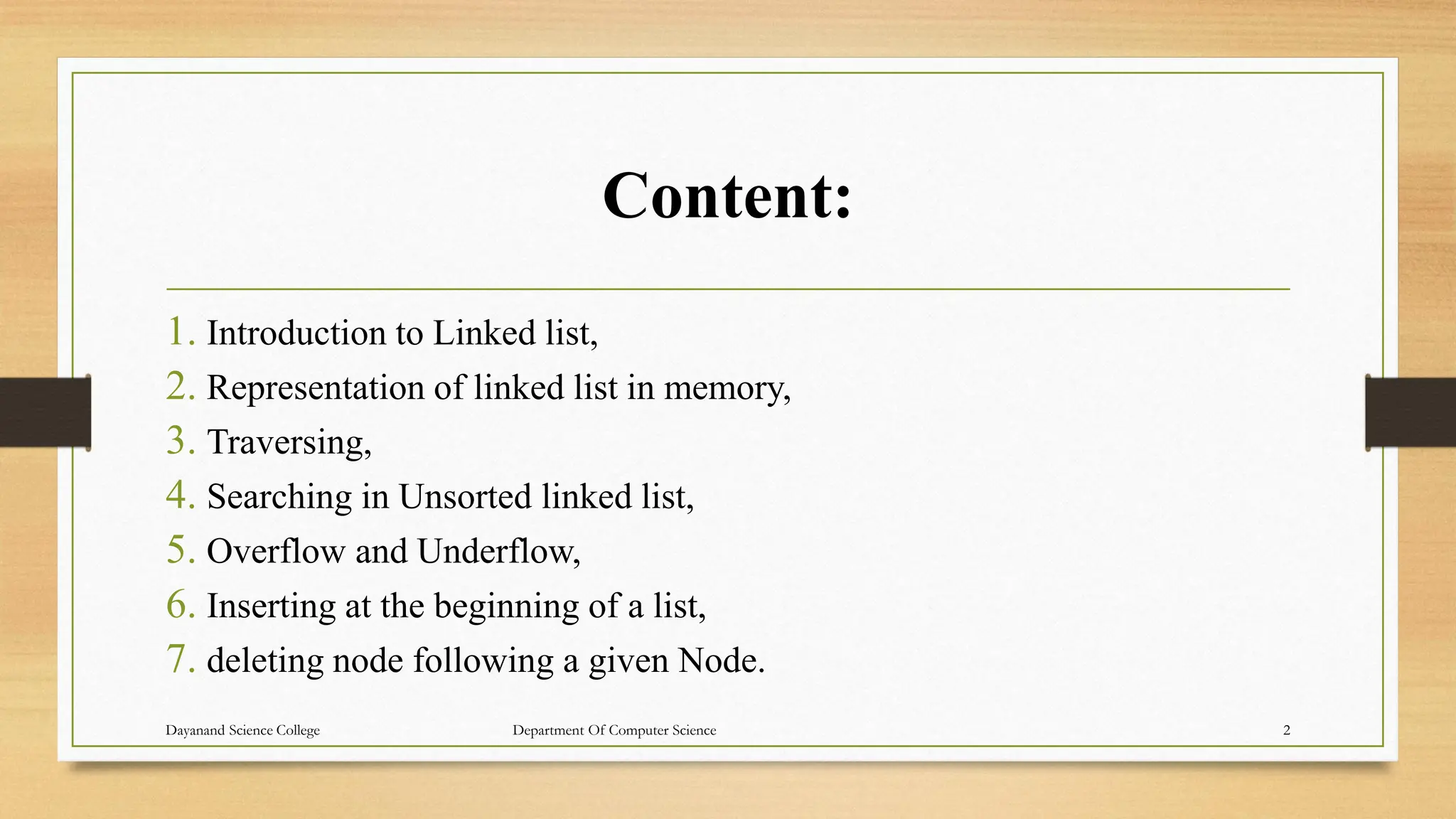
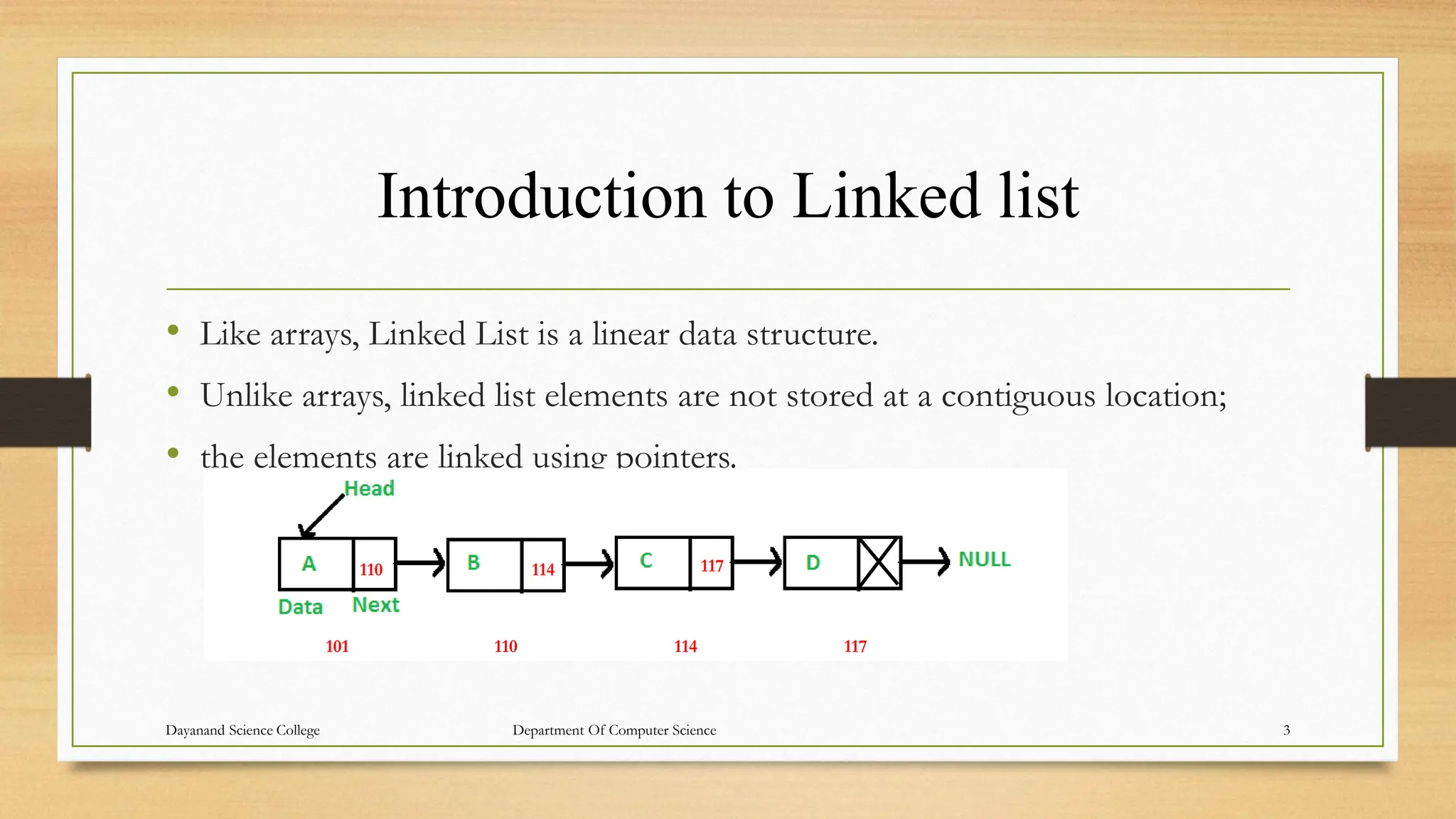

![For example
• in a system, if we maintain a sorted list of IDs in an array id[].
id[] = [1000, 1010, 1050, 2000, 2040].
• And if we want to insert a new ID 1005, then to maintain the sorted order,
we have to move all the elements after 1000 (excluding 1000).
Deletion is also expensive with arrays until unless some special techniques
are used. For example, to delete 1010 in id[], everything after 1010 has to be
moved.
Dayanand Science College Department Of Computer Science 5](https://image.slidesharecdn.com/unit2-ppt-231025140443-454903f8/75/unit-2-PPT-pdf-5-2048.jpg)
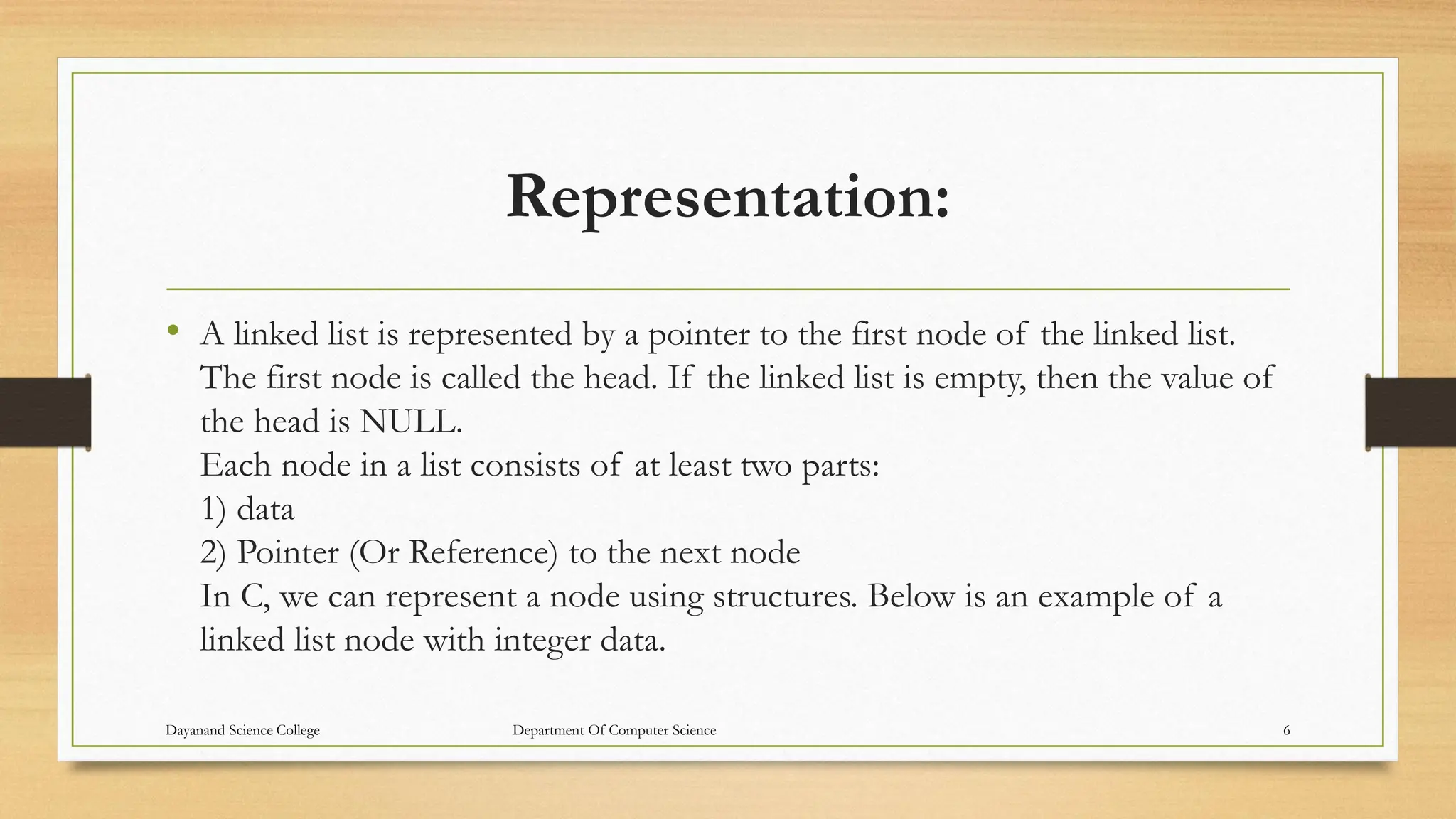
![Representation:
• Let LIST be a linked list. Then LIST will be maintained in memory specified
as follows. First of all, LIST requires two linear arrays we will call them here
INFO and LINK- such that INFO[K] and LINK[K] contain, respectively,
the information part and the nextpointer field of a node LIST. As noted above
LIST also requires a variable name- such as START. START contains the
location of the beginning of the list, and a nextpointer sentinel -denoted by
NULL- which indicate the end of the list. Since the subscripts of the array
INFO and LINK are usually positive, we will choose NULL=0.
Dayanand Science College Department Of Computer Science 7](https://image.slidesharecdn.com/unit2-ppt-231025140443-454903f8/75/unit-2-PPT-pdf-7-2048.jpg)
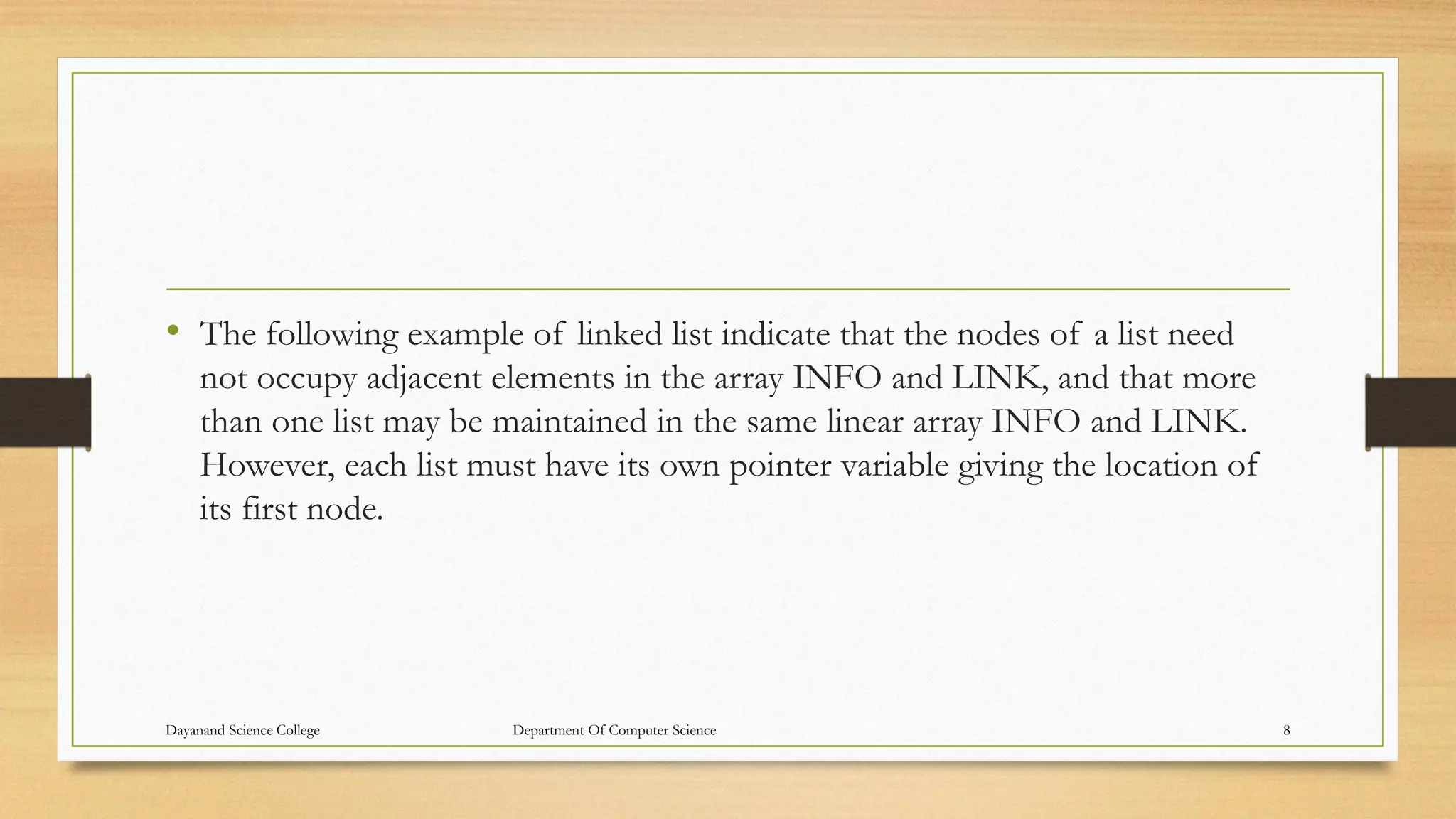
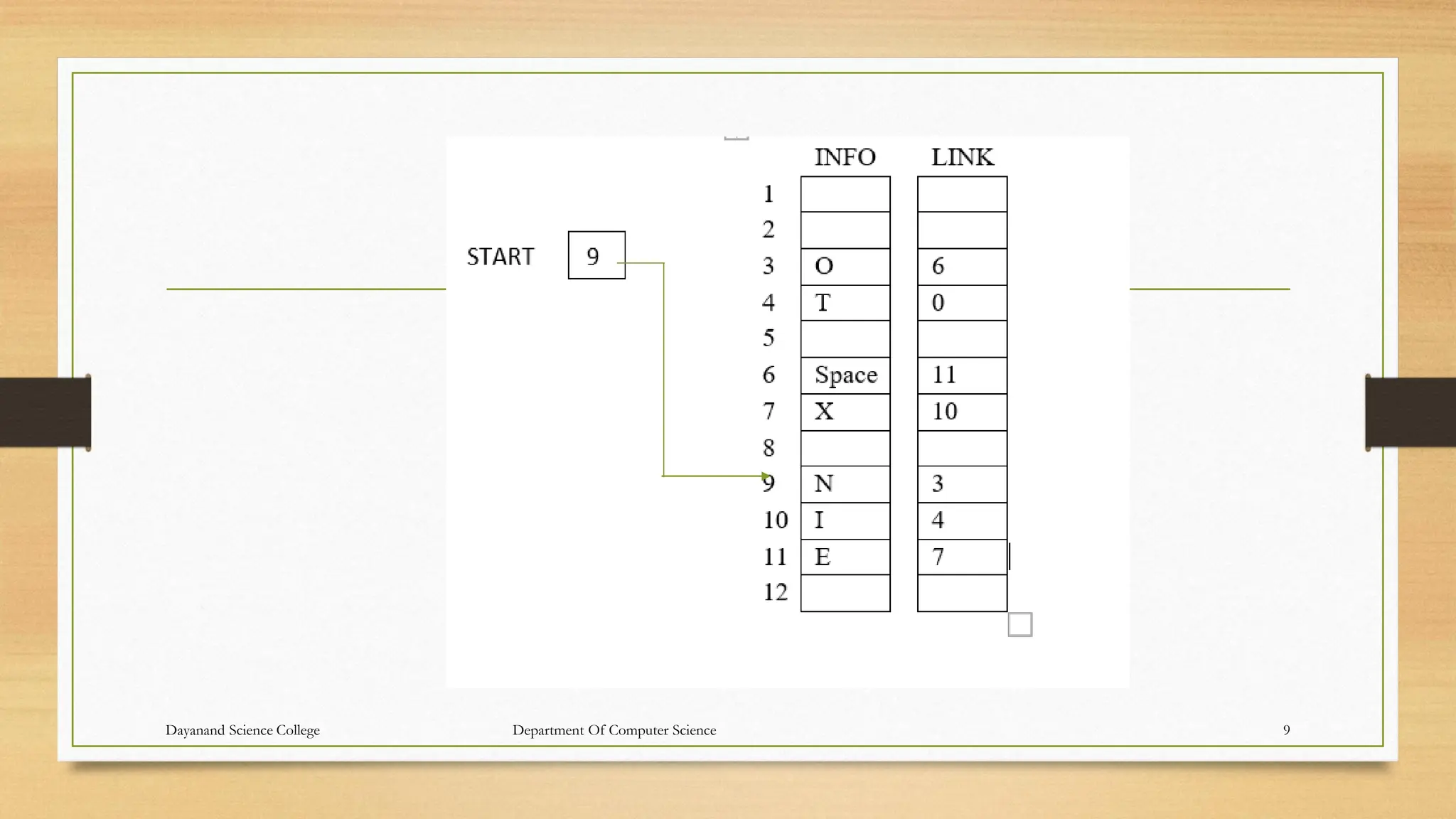
![Representation
• Above picture is of linked list in memory where each node of the list contains a single character. We can obtain the actual list of characters as
follows.
• Algorithm
• START= 9, so INFO[9]=N is the first character.
• LINK[9]=3, so INFO[3]=O is the second character.
• LINK[3]=6, so INFO[6]= (Blank) is the third character.
• LINK[6]=11, so INFO[11]=E is the fourth character.
• LINK[11]=7, so INFO[7]=X is the fifth character.
• LINK[7]=10, so INFO[10]=I is the sixth character.
• LINK[10]=4, so INFO[4]=T is the seventh character.
• LINK[4]=0, the NULL value, so the List has ended.
• In other words, NO EXIT is the character string.
Dayanand Science College Department Of Computer Science 10](https://image.slidesharecdn.com/unit2-ppt-231025140443-454903f8/75/unit-2-PPT-pdf-10-2048.jpg)
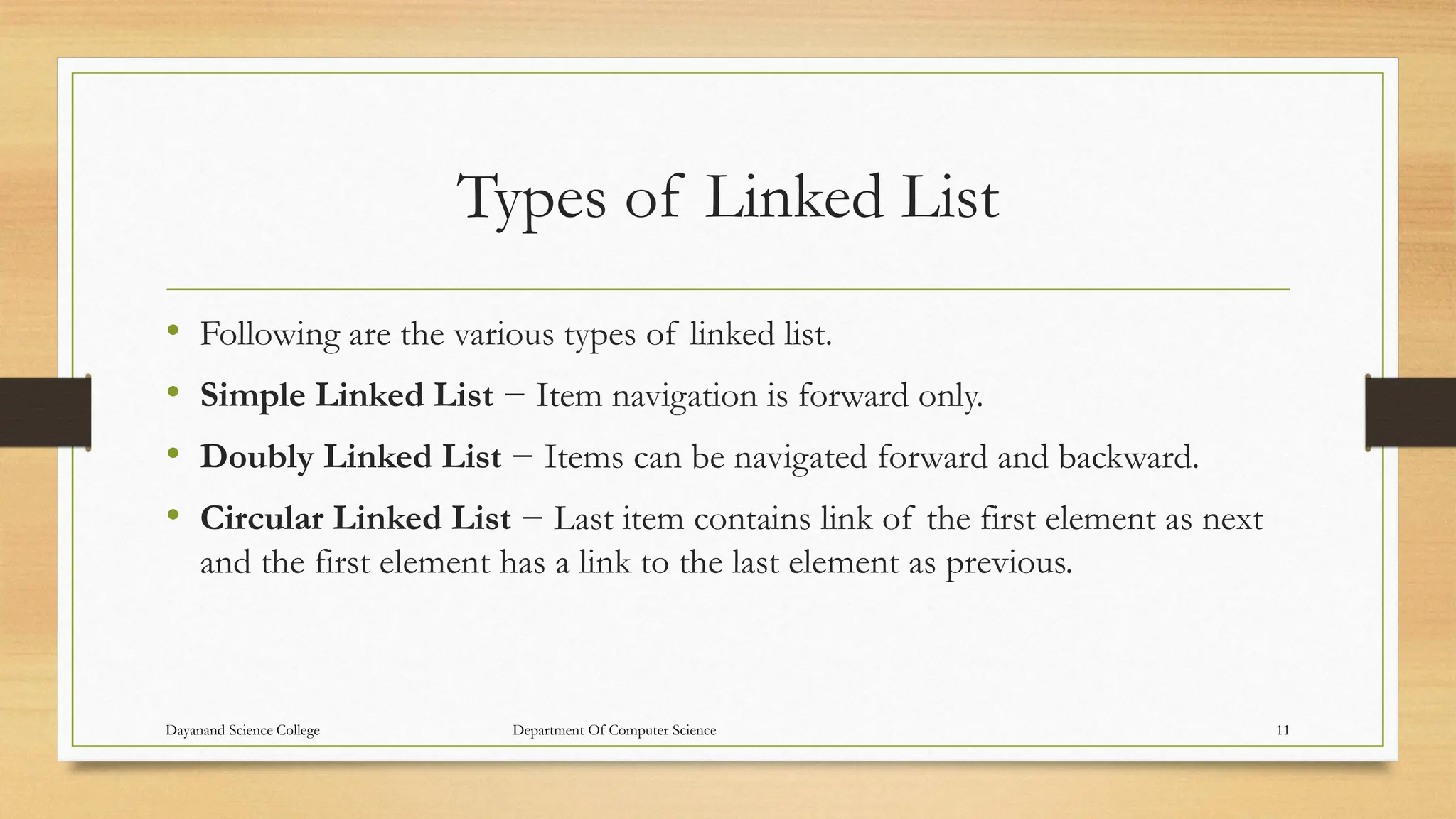
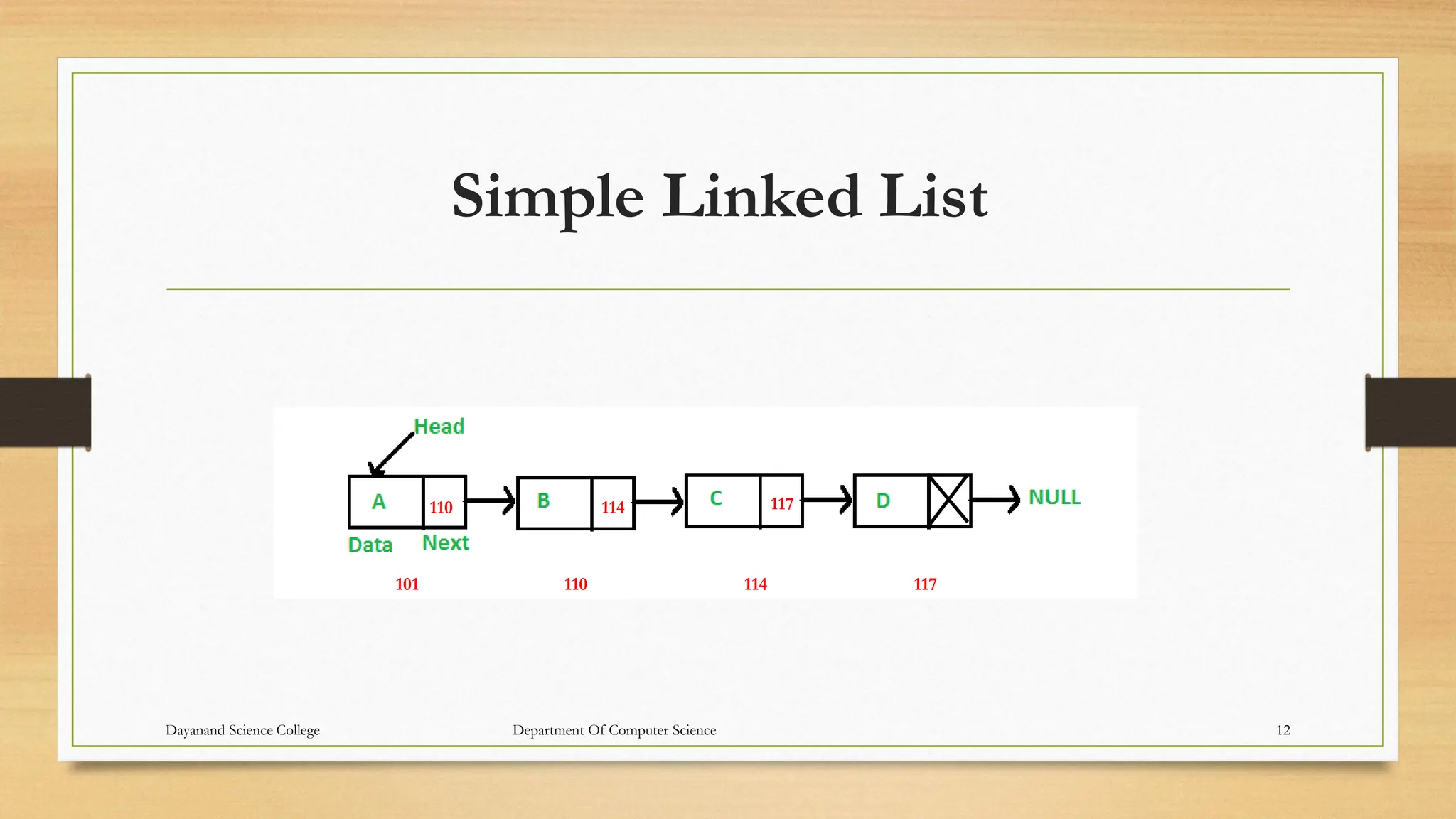

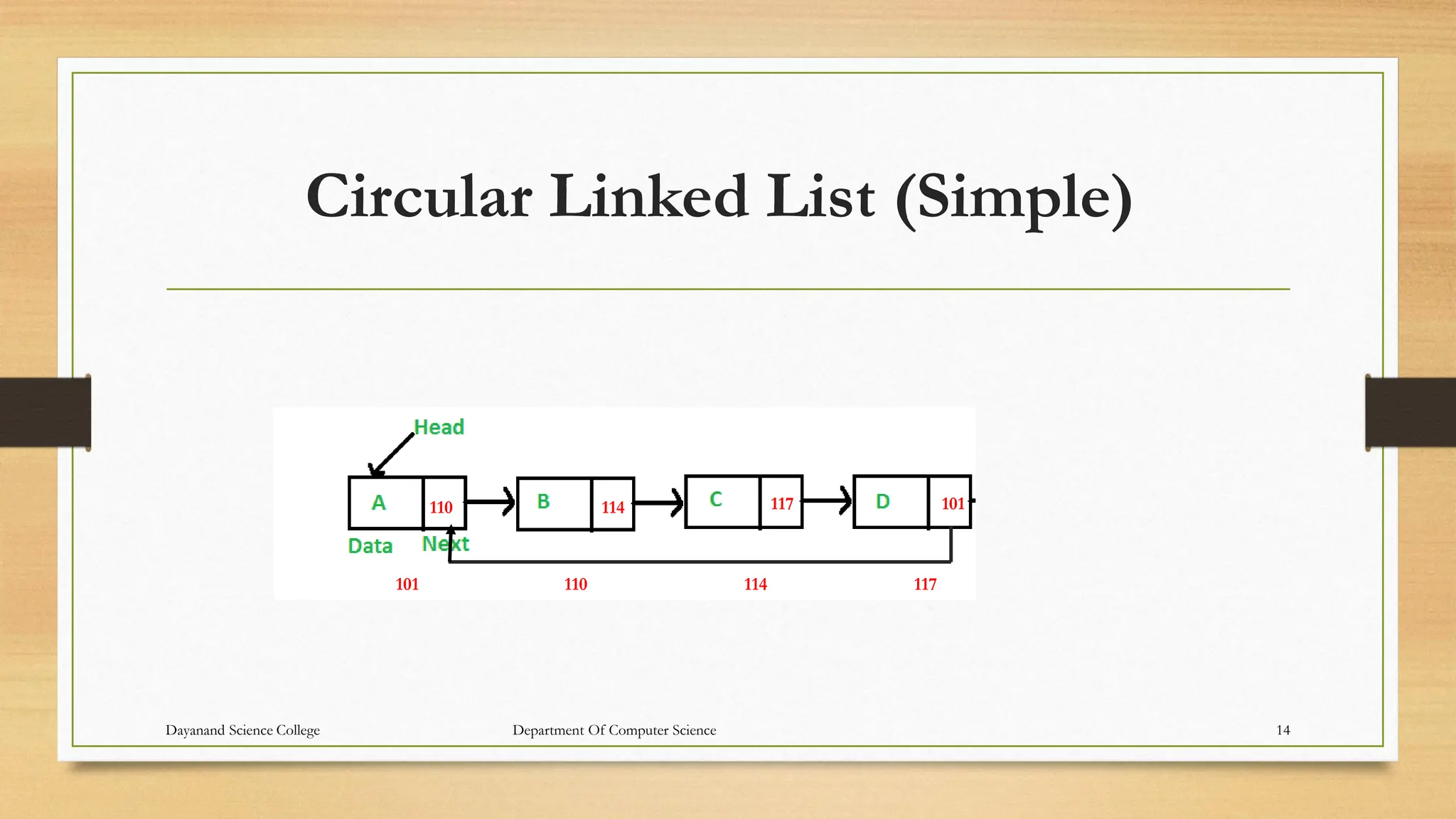


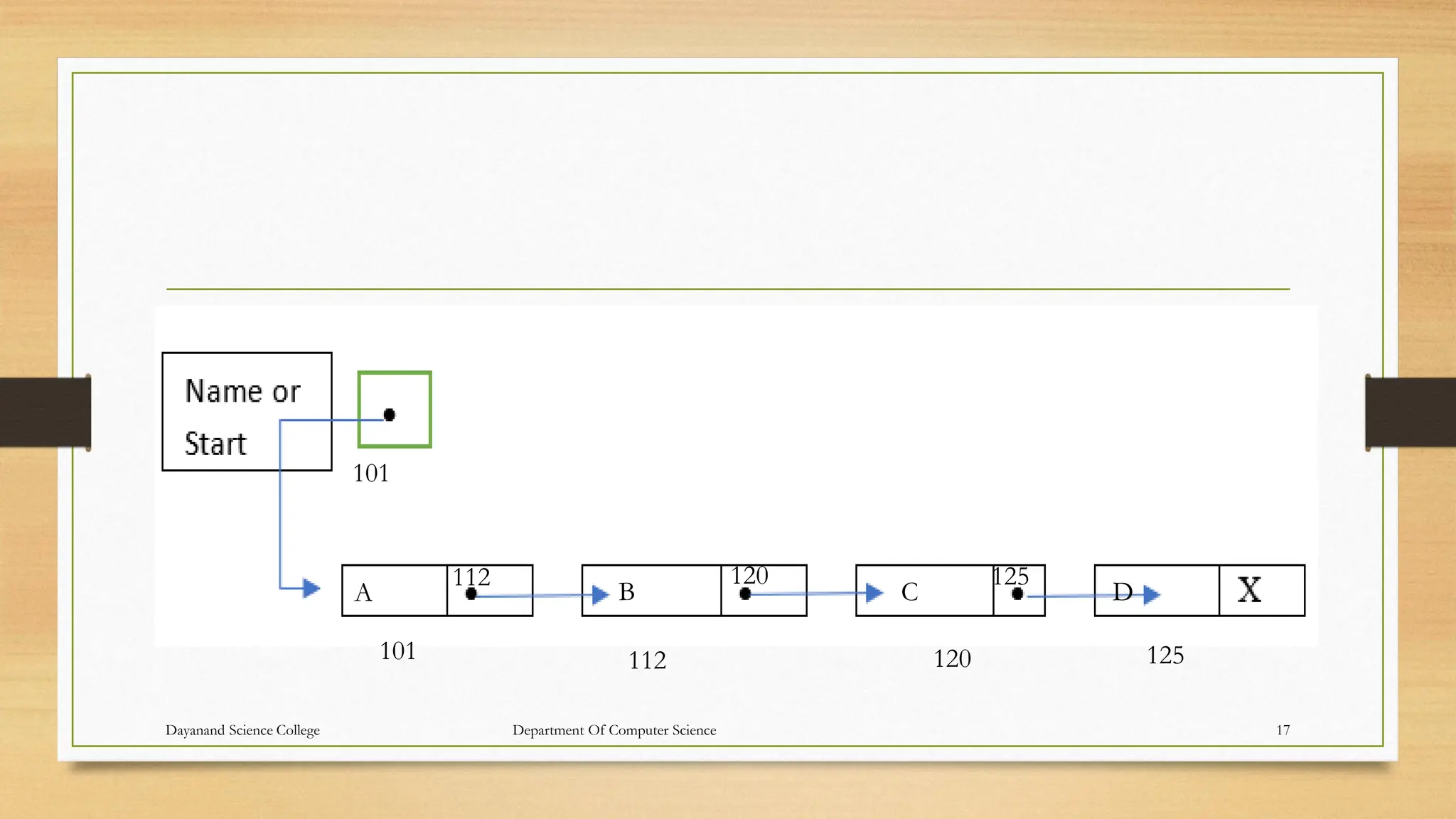
![Algorithm: 1. Set PTR:=START.[Initializes pointer PTR]
2. Repeat Step 3 and 4 while PTR≠ NULL.
3. Apply PROCESS to INFO[PTR].
4. Set PTR:= LINK[PTR]. [PTR now points to the next node.]
[End of Step 2 loop.]
5. Exit.
Dayanand Science College Department Of Computer Science 18](https://image.slidesharecdn.com/unit2-ppt-231025140443-454903f8/75/unit-2-PPT-pdf-18-2048.jpg)
![Algorithm details
Initialize PTR or START.
Then process INFO[PTR], the information at the first node.
Update PTR by the assignment PTR:=LINK[PTR], so that
PTR points to the second node.
Then Process INFO[PTR], the information at the second node.
Again update PTR by the assignment operator
PTR:=LINK[PTR], and then process INFO[PTR], the
information at the third node.
And so on. Continue until PTR=NULL, which signals the end
of the list.
Dayanand Science College Department Of Computer Science 19](https://image.slidesharecdn.com/unit2-ppt-231025140443-454903f8/75/unit-2-PPT-pdf-19-2048.jpg)
![Traversing Linear Array
• LA- Array, Lower Bound= LB, Upper Bound=UB, S-> Process
each element
• Algorithm: 1) Initialize Counter I=LB
2) Loop (While I<=UB)
3) Apply S to LA[I]
4) I=I+1
5) End Loop
6) Exit
1
2
3
4
LB
UB
5
1
2
3
4
5
I=LB LA[i] *2 I=I+1
1 1*2=2 I=1+1=2
2 2*2=4 I=2+1=3
3 3*2=6 I=3+1=4
4 4*2=8 I=4+1=5
5 5*2=10 I=5+1=6
Dayanand Science College Department Of Computer Science 20](https://image.slidesharecdn.com/unit2-ppt-231025140443-454903f8/75/unit-2-PPT-pdf-20-2048.jpg)
![#include <stdio.h>
#include<conio.h>
void main()
{ int LA[] = {2,4,6,8,9};
int i, n = 5;
printf("The array elements are:n");
for(i = 0; i < n; i++)
{
printf("LA[%d] = %d n", i, LA[i]);
}
getch();
}
Command Prompt
The array elements
are:
LA[0] = 2
LA[1] = 4
LA[2] = 6
LA[3] = 8
LA[4] = 9
Dayanand Science College Department Of Computer Science 21](https://image.slidesharecdn.com/unit2-ppt-231025140443-454903f8/75/unit-2-PPT-pdf-21-2048.jpg)
![2.4 Searching Unsorted linked list
• Let LIST be a linked list in memory which is not sorted, then one searches for
ITEM in LIST by traversing through the list using a pointer variable PTR and
comparing ITEM with the contents INFO[PTR] of each node, one by one, of
LIST. Before we update the pointer PTR by PTR:=LINK[PTR]
• We require two tests. First we have to check to see whether we have reached the
end of list i.e.
• PTR= NULL
• Then we check to see whether
• INFO[PTR]=ITEM
Dayanand Science College Department Of Computer Science 22](https://image.slidesharecdn.com/unit2-ppt-231025140443-454903f8/75/unit-2-PPT-pdf-22-2048.jpg)
![Algorithm:
SEARCH (INFO, LINK, START, ITEM, LOC)
LIST is a linked list in memory. This algorithm finds the location LOC of the node where
ITEM first appear in LIST, or set LOC=NULL.
set PTR:=START.
Repeat step 3 while PTR ≠ NULL:
If ITEM =INFO[PTR], then:
Set LOC:=PTR, and Exit.
Else:
Set PTR:=LINK[PTR].[PTR now points to the next node.]
[End of IF structure]
[End of step 2 loop]
[Search is unsuccessful.] set LOC:=NULL.
Exit.
Dayanand Science College Department Of Computer Science 23](https://image.slidesharecdn.com/unit2-ppt-231025140443-454903f8/75/unit-2-PPT-pdf-23-2048.jpg)
